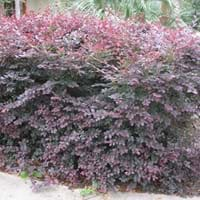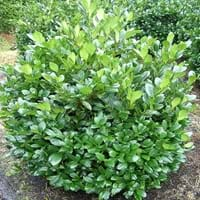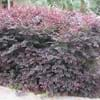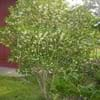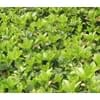Life Span
Perennial
Perennial
Type
Broadleaf Evergreen
Broadleaf Evergreen
Origin
China, Japan
Eastern Europe, Western Asia
Types
Little Rose Dawn, Hines Purpleleaf, ‘Shang-hi
Castlewellan, Otto Luyken, Schipkaensis
Number of Varieties
Not Available
Habitat
gardens, Hillside, open Woodlands, Roadsides, Rocky areas, Stream side, Woodlands
Lowland evergreen rainforest
USDA Hardiness Zone
6-9
6-9
AHS Heat Zone
Not Available
Not Available
Habit
Oval or Rounded
Spreading
Flower Color Modifier
Bicolor
Bicolor
Leaf Color in Spring
Green, Bronze
Dark Green
Leaf Color in Summer
Green
Dark Green
Leaf Color in Fall
Green
Dark Green
Leaf Color in Winter
Green
Dark Green
Leaf Shape
Ovate
broad, flat
Plant Season
Spring, Summer, Fall, Winter
Spring, Summer, Fall, Winter
Sunlight
Full Sun, Partial Sun, Partial shade
Full Sun, Partial Sun, Partial shade, Full Shade
Type of Soil
Loam
Clay, Loam
The pH of Soil
Acidic, Neutral
Acidic, Neutral
Soil Drainage
Average
Well drained
Bloom Time
Early Spring, Late Winter
Spring
Tolerances
Drought
Drought, Salt
Where to Plant?
Container, Ground
Ground
How to Plant?
Seedlings, Transplanting
Softwood cuttings
Plant Maintenance
Low
Medium
Watering Requirements
Do Not over Water
Keep the Soil well drained, Provide sufficient water to saturate the root zone, Use Mulches to help prevent water loss during hot and windy weather
In Summer
Lots of watering
Lots of watering
In Spring
Consistently
Moderate
In Winter
Ample Water
Average Water
Soil pH
Acidic, Neutral
Acidic, Neutral
Soil Type
Loam
Clay, Loam
Soil Drainage Capacity
Average
Well drained
Sun Exposure
Full Sun, Partial Sun, Partial shade
Full Sun, Partial Sun, Partial shade, Full Shade
Pruning
Prune to control growth
Remove damaged leaves, Remove dead branches, Remove dead leaves
Fertilizers
All-Purpose Liquid Fertilizer, Fertilize three times a year
All-Purpose Liquid Fertilizer
Pests and Diseases
Bacterial Gall
Red blotch
Plant Tolerance
Drought
Drought
Flower Petal Number
Single
Single
Foliage Texture
Medium
Medium
Foliage Sheen
Matte
Glossy
Attracts
Not Available
Bees, Birds, Insects
Allergy
Not Available
Not Available
Aesthetic Uses
Showy Purposes
Informal Hedge
Beauty Benefits
Not Available
Not Available
Environmental Uses
Not Available
Air purification
Medicinal Uses
No Medicinal Use
Eye Infection, Nausia, Vomiting
Part of Plant Used
Whole plant
extracted oil
Other Uses
Used as Ornamental plant
Dried heads are used in floristry
Used As Indoor Plant
No
No
Used As Outdoor Plant
Yes
Yes
Garden Design
Container, Feature Plant, Foundation, Hedges, Mixed Border, Screening, Wind Break
Foundation, Hedges, Mixed Border
Botanical Name
LOROPETALUM chinense
PRUNUS laurocerasus 'Otto Luyken'
Common Name
Loropetalum, Chinese fringe flower
cherry laurel, common laurel
In Hindi
Loropetalum
English laurel
In German
Loropetalum
Lorbeerkirsche
In French
Loropetalum
Laurier-cerise
In Spanish
Loropetalum
Prunus laurocerasus
In Greek
Loropetalum
Prunus laurocerasus
In Portuguese
Loropetalum
Prunus laurocerasus
In Polish
Loropetalum
Laurowiśnia wschodnia
In Latin
Loropetalum
Prunus padus
Phylum
Spermatophyta
Tracheophyta
Class
Dicotyledonae
Magnoliopsida
Order
Saxifragales
Rosales
Family
Hamamelidaceae
Rosaceae
Clade
Angiosperms, Core eudicots, Eudicots
Angiosperms, Eudicots, Rosids
Tribe
Not Available
Not Available
Subfamily
Not Available
Not Available
Number of Species
Not Available
Difference Between Loropetalum Chinese and English Laurel
If you are confused whether Loropetalum Chinese or English Laurel are same, here are some features about those plants to help you choose better. Many people think that these two plants have the same characteristics, but one can see Loropetalum Chinese and English Laurel Information and learn more about it. Fertilizers required for proper growth of Loropetalum Chinese are All-Purpose Liquid Fertilizer and Fertilize three times a year, whereas for English Laurel fertilizers required are All-Purpose Liquid Fertilizer. Hence, one should know the basic difference between Loropetalum Chinese and English Laurel if you are planning to have them in your garden to enhance its beauty.
<
Flowering PlantsImportance of Loropetalum Chinese and English Laurel
Want to have the most appropriate plant for your garden? You might want to know the importance of Loropetalum Chinese and English Laurel. Basically, these two plants vary in many aspects. Compare Loropetalum Chinese and English Laurel as they differ in many characteristics such as their life, care, benefits, facts, etc. Every gardener must at least have the slightest clue about the plants he wants to plant in his garden. Compare their benefits, which differ in many ways like facts and uses. The medicinal use of Loropetalum Chinese is No Medicinal Use whereas of English Laurel is Eye Infection, Nausia and Vomiting. Loropetalum Chinese has beauty benefits as follows: Not Available while English Laurel has beauty benefits as follows: Not Available.
Compare Facts of Loropetalum Chinese vs English Laurel
How to choose the best garden plant for your garden depending upon its facts? Here garden plant comparison will help you to solve this query. Compare the facts of Loropetalum Chinese vs English Laurel and know which one to choose. As garden plants have benefits and other uses, allergy is also a major drawback of plants for some people. Allergic reactions of Loropetalum Chinese are Not Available whereas of English Laurel have Not Available respectively. Having a fruit bearing plant in your garden can be a plus point of your garden. Loropetalum Chinese has no showy fruits and English Laurel has no showy fruits. Also Loropetalum Chinese is not flowering and English Laurel is not flowering . You can compare Loropetalum Chinese and English Laurel facts and facts of other plants too.
